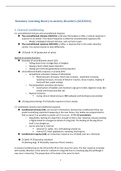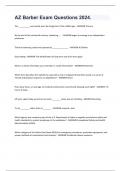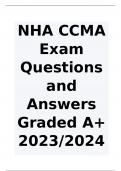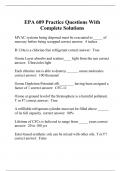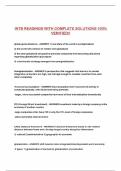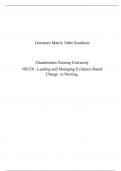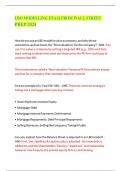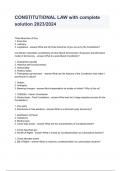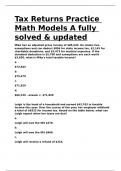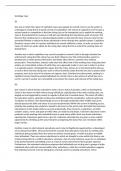2. Classical conditioning
2.1 unconditioned stimulus and unconditioned response
The unconditioned stimulus (US/UCS): a stimulus that evokes a reflex, a natural response in
a person or an animal. This natural response is called the unconditioned response (UR).
o Mostly a biological relevant stimulus, such as food or pain.
The unconditioned response (UR/UCR): a reflex, a response that is not under voluntary
control. You cannot choose to react differently.
US (food) UR (production of salvia)
Applied to anxiety disorders:
Examples of unconditioned stimuli (US):
o Falling down form a bridge (fear of heights)
o Having a heart attack (panic disorder)
o Seeing your child die (generalized anxiety disorder)
Unconditioned bodily responses in anxiety (UR):
o Sympathetic activation (release of adrenaline)
Blood pressure increases, heart rate increases , respiration increases,
sweating increases, increase of blood in muscles, tense muscles, tingling of
hand and feet, pupils enlarge
o Parasympathetic activation decreases
Constraction of bladder and intestinal (urge go to toilet), digestion stops (dry
mouth and throat) and feel sick
o Atypical reactions:
Crying, drop in blood pressure (BBI subtype) and blushing (social anxiety)
US (dog almost biting) UR (bodily response to fear/ anxiety
2.2 conditioned stimulus and conditioned response
Conditioned stimulus (CS): are neutral in themselves, but become conditioned if they can
predict something important happening in the near future. Our bodies are programmed to
find as many CS as possible to predict an US to occur. CS- US associations
o Dog phobia: barking of a dog (CS) is enough to elicit a fear response, because barking
is highly linked to a dangerous attack of a dog (US). The barking of the dog (CS) in
itself is not dangerous.
o Can be external or internal:
External CS: spider, dirt, child playing outside etc.
Internal CS: heart palpitations, sweating, blushing etc.
Conditioned response (CR): an involuntary response to a CS (bell) and not a US (food).
CS (bell) CR (produce salvation)
CS (barking dog) CR (bodily response of fear/ anxiety)
In classical conditioning are the UR and the CR in most cases the same. The fear response in people
with anxiety disorders is the same for a attack of a dog (US) than to a barking dog (CS) (although it
may vary in intensity). The preparation of the body is the same for both.
1

